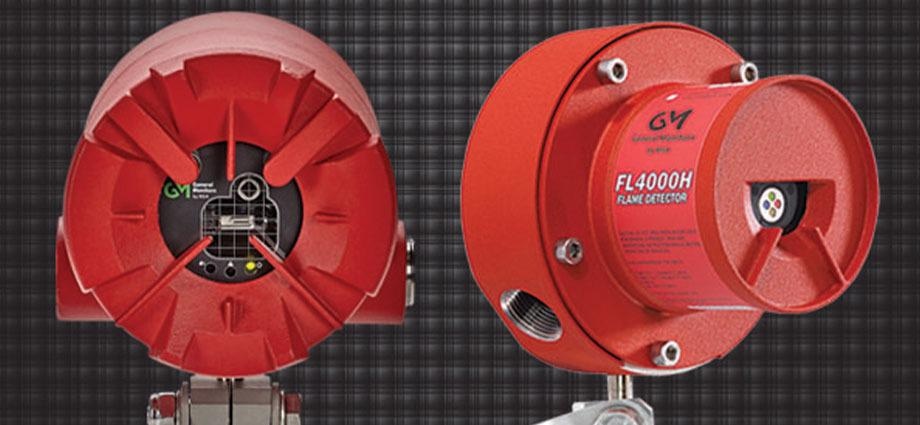The risk of explosion and/or fire remains a critical concern, in traditional industrial environments as well as today’s increasingly complex hazardous processes. Yet, basic process controls do not usually warn of conditions outside normal system limits.

Image Credit: MSA - The Safety Company
An external fire detection system that can sound an alarm quickly in the event of a fire is crucial to protect human lives and valuable equipment, as industry gases and vapors (hydrocarbons) burn with extremely high flame temperatures.
A safety professional must purchase flame detectors that best meet their facility’s particular requirements. Some things to consider when researching a flame and gas detection system are outlined below.
The most popular systems utilize optical techniques to detect flames; that is, they detect the absorption of light at specific wavelengths. Two common optical flame detector types are:
- Combination ultraviolet/infrared (UV/IR)
- Multi-spectrum infrared (MSIR)
UV/IR and MSIR devices are sensitive to more than one band on the energy spectrum, unlike simple IR or UV detectors, and so are less likely to generate a false alarm. Both technologies provide a reasonably fast response time and function well both indoors and outdoors.
There are several factors to consider when choosing a UV/IR or MSIR detector:
- Should a fire occur, how high is the risk of air-borne particulates? Oil, smoke, grease, and some chemical vapors can decrease a UV/IR unit’s detection range, so you should consider MSIR technology if, for instance, heavy smoke is a concern.
- Understanding your fuel’s flammable properties will help you determine the optical flame-detection technology required, for example, solvents, alcohols, gasoline, LNG/LPG or something else.
- How wide an area should the device monitor? Can the detector be placed near the potential ignition source or must it be located relatively far away? Different UV/IR and MSIR units provide varying detection ranges and fields of view (FOV). Match your environment with the corresponding device specifications for the best coverage.
- Do other types of radiant energy exist in your facility, like direct sunlight, arc welding, or hot objects? A flame detector must distinguish between real flames and these non-fire energy sources. Usually, MSIR detectors supply the best immunity to these types of false alarms.

This information has been sourced, reviewed and adapted from materials provided by MSA - The Safety Company.
For more information on this source, please visit MSA - The Safety Company.